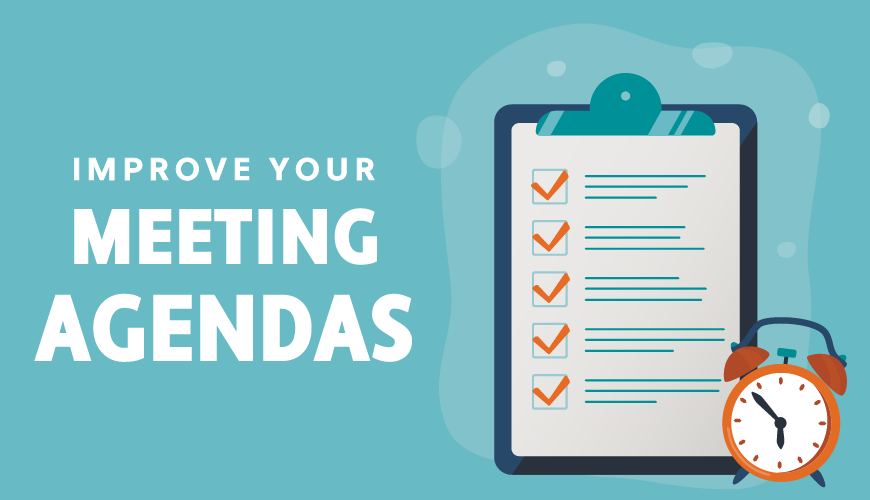Meeting agendas are essential to promoting successful meetings and making employees more productive. Approximately 11 million meetings occur in the U.S. each day (MCI). According to research firm CSO Insights, salespeople spend around 19% of their time in meetings.
While many meetings are necessary to keep business growth moving forward, research indicates that more than 50% of meeting time is wasted and that unproductive meeting time translates into $37 billion annual waste in the US (Better Business Meetings). Conducting useless meetings will never align with your business growth strategies.
Here's a profile of a typical meeting in corporate America (3M):
-
staff meeting (45%)
-
held in a company conference room (74%)
-
starts at 11 a.m.
-
lasts 1 hour and 30 minutes
-
involves 9 people (2 managers, 4 coworkers, 2 subordinates, and 1 outsider)
-
about two hours advanced notice of the meeting
-
no advance written agenda (63%)
-
somewhat or very informal (76%)
-
most or all present actively participate (72%)
-
uses handouts (47%)
-
completely covers agenda only one-half of the time (53%)
-
11% of the time is spent discussing irrelevant issues
Most professionals who meet on a regular basis admit to daydreaming, missing meetings, or missing parts of meetings. A large percentage (73%) say they have brought other work to meetings and 39% say they have dozed off during meetings (MCI).
Read more: 4 Compassionate Ways to Boost Employee Efficiency
One of the biggest problems afflicting meetings is unclear objectives. The best way to ensure that your meeting won’t be effective or efficient is to go into it unsure of what you’re trying to accomplish. This is why having a set agenda prior to meeting is key for both internal and external meetings. It ensures that you’re not wasting the time of your colleagues, your sales team, or most importantly, the time of your customers and prospects.
A clear meeting agenda provides:
-
topics of discussion
-
a leader/presenter for each topic
-
a suggested time allotment for each topic
-
an outline of the meeting
-
a checklist to ensure all topics are covered
-
key objectives of the meeting
When scheduling a meeting, it’s the responsibility of the meeting organizer to present clear objectives to each attendee prior to the meeting. The agenda should always be circulated in advance of the meeting so that attendees know what to expect and have time to prepare. It’s the attendees’ responsibility to come into the meeting having read those objectives and be ready to discuss them.
A best practice is to send an agenda several days before the meeting, with a minimum of 24 hours advance notice. When creating an agenda, the organizer should consider what topics need to be covered at the meeting and how the meeting should flow.
For sales reps, when meeting with prospects, it’s recommended that you (or a personal assistant and virtual executive assistant) send a meeting confirmation email including the meeting agenda and your sales materials in advance—otherwise, there’s a good chance that your prospect may spend the whole meeting reading through your deck as opposed to listening to your pitch, negating the entire purpose of your meeting.
